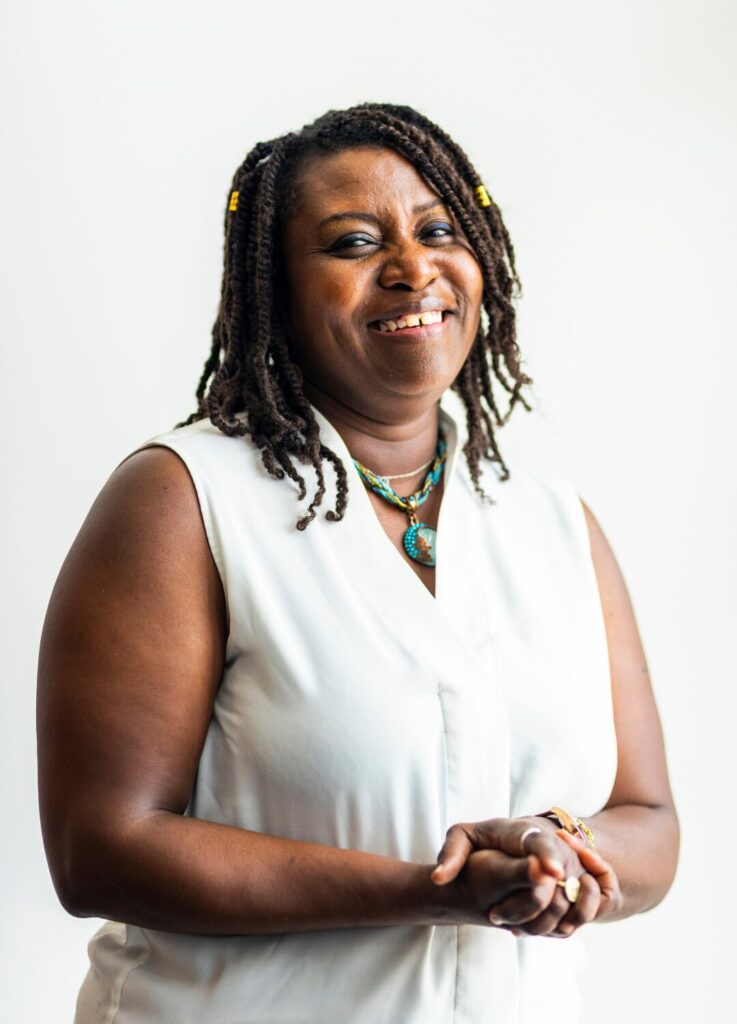The invisible cost of austerity
When the government disengages, who pays the price? Often women do. They use more public services and more of them work there, so they pay twice instead of once. This reality hits healthcare professionals hard, as they have to deal with an additional workload in the institutions, while also providing more care in their family, with ever less government support.
Women represent:
- 75% of staff in health sciences
- 80% of employees who provide care
- 75% of people who stay in long term care facilities
- 75% of people who are informal caregivers and volunteers
Billions of dollars are “saved” per year thanks to women’s unpaid work in Canada.
Health network reforms are often paired with austerity measures and the Dubé reform is no exception. To talk about the reality of caregivers in times of austerity, Murielle Placide spoke about her experience as a licensed practical nurse and caregiver.

Testimonial | Caregiving
Murielle Placide wears many hats: she’s the mother of two children, a union rep, feminist and anti-racist, community radio host, volunteer, licensed practical nurse with experience in CHSLDs, hospital centres, CLSCs, home care and on a float team. She is also a cancer survivor and has been a caregiver for 16 years to her son Fabrice who has a mild intellectual disability and several health issues. It was her commitment to social justice that guided her in her life choices and toward her profession, but the birth of Fabrice was a decisive turning point for her.
“You don’t choose to be a caregiver. It’s a commitment that comes with the emotional bond you have with the person, you are responsible for their well-being. As time went by, I found myself planning everything but, to be honest, I wasn’t prepared for all that, even though I’m very proud to have my son with me.”
In her view, a caregiver’s tasks are multiple, often invisible and begin long before the first diagnosis. She had to go through several people before finally getting answers to her questions, and she had to insist every step of the way. The process was painful and fraught with grief.
Home support, social workers and family support programmes give her a bit of a break, but she is critical of the current approach. “Because of the waiting lists and lack of resources, home support is focused on making families independent, and as I work in the health sector, a number of tasks are delegated to me, but there needs to be more support.” In the current climate of austerity, the criteria for obtaining help are multiplying, and her home support has dropped from 10 hours and 15 minutes to 5 hours and 45 minutes a week, which is not enough for the scale of her son’s needs.
However, she insists on the importance of her support network and would like to send a message of solidarity to all healthcare professionals who are going through a situation similar to hers. “To all those who live the role of caregiver in the shadows, who manage without complaining, who endure without cracking and above all with resilience: you are not alone. Our silence speaks, our actions count, and our wounds deserve to be seen, heard and respected.” Resources are available to support family caregivers and healthcare professionals who want to provide them with better support.
This article was published in Issue No. 1 of Résonance Magazine (September 2025) – SSN 2819-5345 (PDF)
Learn more
- Coalition pour la conciliation famille-travail-études (CCFTÉ). La proche aidance.
- Gouvernement du Québec. Personne proche aidante – Services et soutien.
- L’Appui pour les proches aidants. Être proche aidant.
- Observatoire québécois de la proche aidance. La proche aidance.
- Observatoire québécois de la proche aidance. Qu’est-ce qu’une personne proche aidante?
- Proche aidance Québec. Statistiques sur les personnes proches aidantes.

